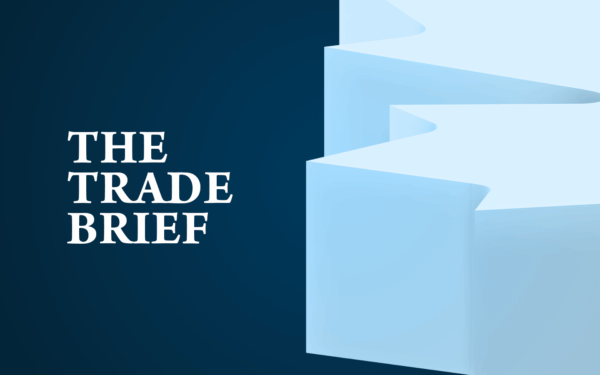Canada-EU Summit 2025: A Next-Level Strategic Partnership
As published in Policy Magazine
On June 23rd, leaders from Canada and the European Union will meet in Brussels. This meeting, wedged between the higher-profile G7 and NATO summits taking place only a week apart, is unlikely to be the routine, stock-taking exercise that has defined many bilateral summits in recent years. In fact, it is shaping up to be the most consequential Canada-EU leaders’ meeting since the 2009 Prague Summit, when negotiations for the Comprehensive Economic and Trade Agreement (CETA) were launched.
The context of this summit is well known. The EU, the world’s third-largest economy, is re-industrializing around green and digital priorities. It is working to secure access to raw materials and energy, recalibrating its relationships with the United States and China, and ramping up its defence capabilities in the face of Russian aggression coupled with the threat of receding American military support on the continent.
Canada, for its part, is re-thinking its traditional economic reliance on the United States. What was once regarded as a strategic advantage has, in the face of America’s inward turn, become a source of vulnerability. As a result, both Canada and the EU now see diversification – not just of markets, but of partnerships – as a strategic imperative.
This moment of realignment has created a rare opportunity for deeper and more strategic Canada-EU cooperation that both Canada and the EU are keen to embrace. And while talk of closer ties has long been part of the transatlantic “summit script”, the disruptions to the global order have turned talk into action.
As per previous summits since Prague, we can expect this summit to involve a focus on CETA. Despite only being provisionally applied since 2017, CETA is working: bilateral trade in goods has risen over 65 percent, and services are up 73 percent.
Nevertheless, the potential of CETA remains under-realized.
One key reason is the regulatory divergences of the Canadian and European markets. To increase bilateral trade, more ambition and action will be required to identify areas of regulatory alignment.
CETA has an innovative structure for collaboration between regulators, but it needs new life.
If the leaders look to bridge regulatory divergences, there are two steps that will help to re-operationalize the CETA regulatory cooperation structure: first, focusing on high-impact sectors with clear metrics for success; and second, ensuring businesses and industry groups have a meaningful role in this process.
Events such as the EU-Canada Stakeholder Roundtable on Regulatory Cooperation in Hydrogen, a gathering organized by the CETA Regulatory Corporation Forum in June 2024 that brought Canadian and European industry groups and businesses together with Canadian and European regulators to look at how to improve the building of a Canada-EU hydrogen market, offer a useful model.
Yet, such is the demand for greater Canada-EU cooperation that there is much discussion in Ottawa and Brussels of moving beyond CETA. Indeed, the idea of a “CETA Plus” model is emerging – one that does not include Canada joining the EU (as some are now openly advocating), but does involve deeper, more strategic engagement in areas that go well beyond traditional trade liberalization.
In today’s world, economic security cannot be achieved solely through free and open trade; rather, economic security requires a more strategic approach. This is particularly true in the case of access to energy and raw materials. Europe sees Canada as a credible, reliable partner – one with the natural resources and rule of law that its re-industrialization requires. For Canada, this is an opportunity not just to export, but to embed itself in the EU’s long-term industrial planning.
This moment of realignment has created a rare opportunity for deeper and more strategic Canada-EU cooperation that both Canada and the EU are keen to embrace.
While hydrogen has been an important area of cooperation in the Canada-EU relationship in recent years, cooperation in a wider range of energy sources (for example, nuclear energy and LNG) could also gain more traction as both sides consider how to decarbonize while securing supply. Moreover, the Canada-EU Strategic Partnership on Raw Materials, which specifically focuses on integrating raw materials value chains, fostering science, technology, and innovation, and promoting high standards stands out as a possible template for broader transatlantic industrial cooperation in other areas.
Digital policy will also be high on the summit agenda. Following on the 2023 Canada-EU Digital Partnership Agreement, there are growing expectations that formal talks on a digital trade agreement could begin. By way of example, the EU recently signed a digital trade agreement with Singapore that evolved from a digital partnership agreement to a legally binding treaty that sets out trade rules for cross-border data flows.
AI governance is another important area to watch at the summit. Canada and the EU have each signalled their intent to be global leaders in this space. While the EU is setting standards through its AI Act, Canada brings strengths in research, innovation, and access to critical inputs such as rare earths. The appointment of a Canadian Minister for AI further underscores the country’s ambitions.
A bilateral framework for AI collaboration could be transformative – combining governance, technological development, and ethical leadership in a way few other partnerships can.
One of the most anticipated outcomes of the summit is the expected signing of a Canada-EU security and defence cooperation agreement. Like the agreement signed between the EU and the United Kingdom last month, such an agreement will facilitate regular high-level dialogue and strategic consultations in security and defence areas.
The agreement would also open the door to Canada joining the EU’s Security Action for Europe (SAFE) fund – a EUR150 billion financial instrument within the ReArm Europe/Readiness 2030 plan. Canada’s recent throne speech confirmed the government’s intention to participate. While negotiations are ongoing, recent reporting suggest the summit could mark a breakthrough.
This would be a historic turning point. For decades, Canada’s defence position has been largely dependent on the US. A strategic partnership with the EU will allow Canada access to the European defence market and European resources so it can significantly develop its own defence industrial base and meet its NATO obligations.
Canada-EU summits have always been opportunities for dialogue; however, this meeting offers a chance to turn that dialogue into transformative action. While this meeting will likely result in new areas of cooperation, many of the expected themes will not be new. What is different this time is the convergence of urgency, opportunity, and political will.
For Canada, the EU represents more than just a market – it is a partner in building a resilient, sustainable, and rules-based future. This summit will not deliver all of that in a day. It can, however, set the stage and offer direction for a bold and more ambitious relationship with the EU.










